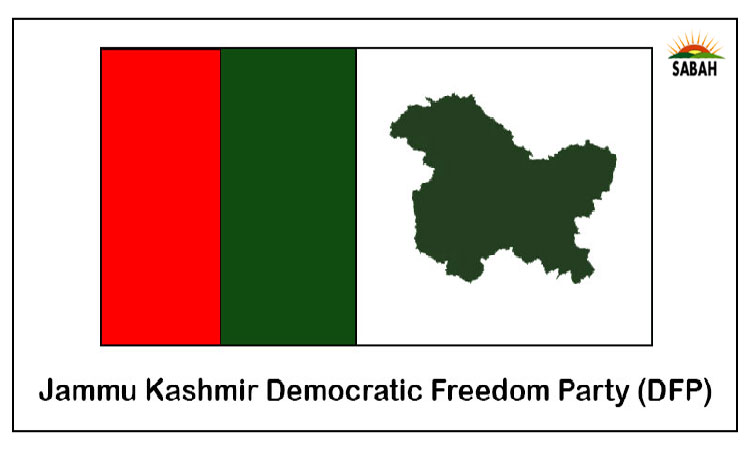The climate-hunger nexus…Sherry Rehman
Pathways to resilience are never easy, but as global and national stock takes suggest, it is the only way forward for countries seeking to save their populations from growing climate stress. The UNFCCC defines climate resilience as a whole-of-society capacity to anticipate climate risks and hazards, absorb shocks and stresses, while reshaping and transforming development pathways.
With COP28 coming up in UAE, the fact that the last G20 meeting in India underplayed climate commitments already indicates that the countries responsible for 85 per cent of global emissions are not ready for transformational action on mitigating their carbon footprint enough for keeping 1.5 alive, or moving towards carbon neutrality. What that means is that in the near-term at least we will have to expect higher temperatures and higher exposure to the risks climate emergencies bring. If developing countries are to face the future with some degree of wellbeing, then populations will have to be protected from climate disruptions that will only grow. One of the key lessons learnt from the last few years of climate emergencies is that every disaster or slow onset change will impact the vulnerable first, in multiple ways that limit options for shelter, healthcare, and of course enhance fragility. Higher risks of poverty and food insecurity invariably follow.
The National Adaptation Plan Pakistan introduced in July 2023 is, like other such plans, not meant to function as a stand-alone set of actions. It is designed to prioritize interventions that prepare the country for changing its model of development, planning, managing disaster risk and resourcing resilience. It targets agriculture along with water, as principal sectors for substantive reform actions that are long overdue. Why? Because agriculture is still the backbone of Pakistans economy, supports 40 per cent of its labour and accounts for 20 per cent of its GDP. It is critical to Pakistans growth, employment, poverty reduction and food security ambitions.
The entire Asia-Pacific region is facing the stress of growing scarcity, hunger, food price inflation, with agricultural workers living on the edge of poverty compelled to work in the heat outdoors despite rising temperatures. The UN FAO says that 418 million Asians suffered from extreme hunger in 2021, up from 375 million in 2020, which tells us that the entire region has no option but to adapt. Agricultural workers in countries with low or medium human development were among the worst affected by exposure to extreme temperatures, (according to the UN HD index) suffering almost half of the 295 billion potential work hours lost due to heat in 2020. Women remained the most vulnerable and malnourished as in almost all the labour cohorts, while they carried added burdens of transporting water from source to home for their families and farm use.
Given that Pakistan is already 40 per cent food insecure and projected to be at 60 per cent by 2050 or earlier, it is clear that conventional governance is no longer the path to a sustainable or self-reliant future. Climate change has triggered extreme weather events, droughts, flooding, sea level rise and heatwaves, that have critically impacted agricultural productivity, soil quality and led to shrinking crop yields and poor livestock health. Land, water and labour are all under stress as yields for major crops like wheat and cotton have gone down by 1.5 to 4.2 times below field potential, and 2.1 to 5.6 times below international best practices.
Changing consumption patterns, dietary habits, supply chain disruptions in imported fuel, fertilizer, and growing populations have all challenged both the price and demand for food all over the country. Food inflation, in fact, has defined new levels of deprivation for both the urban and rural poor in Pakistan. At the Sustainability Projects impact findings, a worrying growing year-on-year decline in food systems resilience has been noted for all of the Asia Pacific region. From this authors own findings, Pakistan is clearly in a recovery trap, where countries have little time to recover from climate disruptions before their agri-water systems have little time to sustainably recover, let alone embark on better, yet unfamiliar and locally untested practices.
Despite a few sub-national actions to begin conserving water by blocking inefficiencies in the Indus basin irrigation system, no serious interventions have been made in Pakistan to check the decline in agricultural productivity. Land use changes, mostly rural to urban, have put agricultural land under stress, particularly in Punjab. In the delta region waterlogging and salinity have reduced productivity of the soil by 35 per cent or more, while in extreme cases of sea intrusion the soil is completely unfit for cultivation in what was once a flourishing Indus delta area.
Climate-smart agriculture is not always low-cost as an adaptation strategy but it is one of the most popular interventions all over Asia, where technology is harnessed for optimising agriculture, with tunnelling, precision irrigation, and crop diversification among the commonly favoured. In Pakistan, pilot projects initiated in some areas have worked, while in other areas they have been found to be expensive compared to conventional methods of farming. In most cases, CSA has not been scaled up at any transformational level for several reasons, including lack of financing but also because fit-for-purpose changes have not been incentivized in an environment of weather and water-timing uncertainty. Policy coherence to assist smallholder farmers across line departments is absent, while consistent executive will to drive innovation is also missing in the public sector. Provincial governments continue to incentivize conventional farming with flood irrigation, high extraction of ground water and over-use of pesticides as the norm.
Local innovation or knowledge-creation is limited. Research extension services in agricultural curricula are anaemic and hidebound by tradition instead of innovation. Policymakers are driven to sub-optimal solutions even to make technical recommendations, which ultimately boil down to consultants who parachute in and out with their favourite biases intact. Reports and policies are made in order to tick the right boxes where needed and quietly shelved when difficult decisions that challenge the status quo are needed. Public purchasing of agri-commodities, state intervention in support pricing, agriculture taxation, water distribution and waste, land usage that exploits natural capital instead of conserving it are all part of the policy mix.
Despite a growing and clear need for adaptation practices in many countries, fiscal space is shrinking globally for financing reform. Empowering vulnerable groups, especially small farmers under stress, is crucial to building resilience in any climate-stressed ecosystem, where the countrys natural capital is subject to environmental erosion, under-recharging of ground water and serial timber theft.
Pakistan has made some gains in recent plans for replenishing mangrove and mountain forest cover, but the scale of investments needed for recharging just the Indus basin that sustains 90 per cent of agri-based livelihoods range from $11-19 billion. Local inclusion and empowerment of communities from a bottom-up effort is perhaps the only way forward in the near term, with displaced farming families from 2022 megaflood being given new land titles to woman owners in Sindh. This builds in local incentives to not over-extract ground water, till the land with better crop rotation and look to the long-term health of the soil.
The mountain to delta plan for adaptation (NAP 2023, GOP) prioritizes agriculture because growing food, managing rangelands, livestock livelihoods is fundamental to Pakistans current economic structure. The context, both globally and nationally, should no longer be defined as anything but a crisis of widespread hunger. The Hunger Hotspots 2023 report by FAO, WFP lists Pakistan as a country of very high concern along with Kenya, Congo, Ethiopia, Central African Republic, and Syria. Among the recommendations made in the report, strengthening the shock-responsive capacity of existing social protection programmes like the BISP is key. It also calls for building the capacity of the national and provincial disaster management authorities, because in the last climate disaster in 2022 Pakistan had over 10 million people exposed to acute food insecurity. It also pointed to high amounts of external indebtedness as part of the problem, especially related to food imports. The crisis is cross-sectoral, as the NAP says. That is the only way to address it, not in policy and departmental silos.
Courtesy The News












